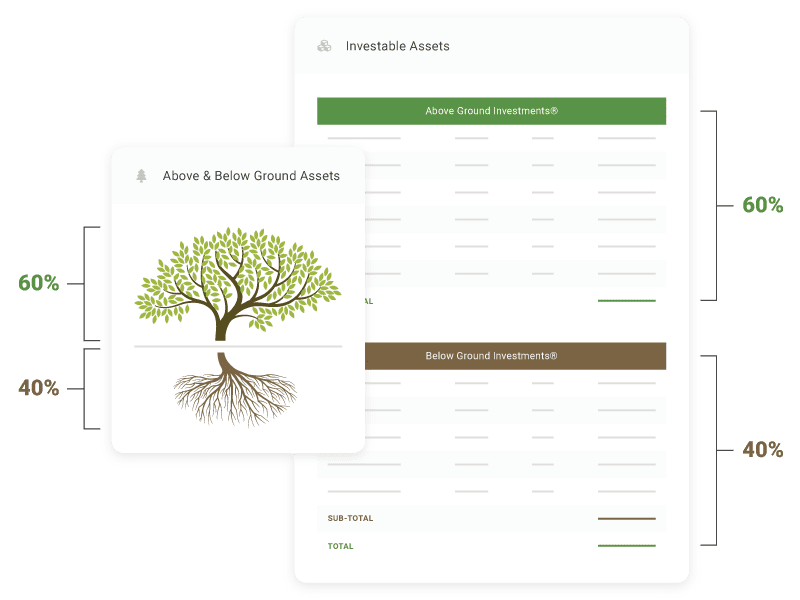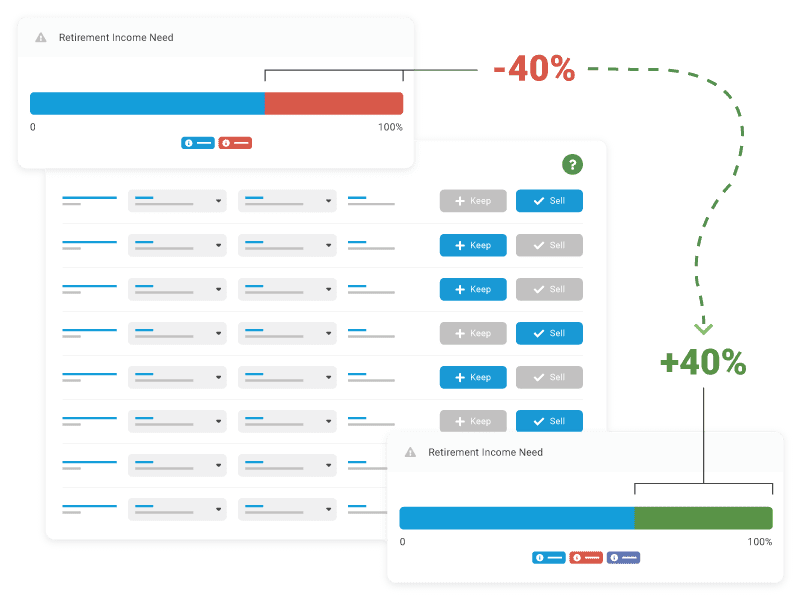Understanding the basics of investing, stocks and bonds before getting started
Many investors choose to let financial professionals manage their money in exchange-traded funds and mutual funds. However, some people may want to take a more hands-on approach to investing, which means needing a better understanding of individual stocks, bonds, and perhaps even the basic terminology. If you’re just getting started in taking a more active approach to investing you’ll need to understand how to get started, definitions of basic terminology, and ways to keep yourself updated about investing along the way.
When taking a more involved approach to investing there are a number of benefits. For one, it can help you better understand where your money is going and how it is being used. Additionally, investing your money can give you the opportunity to make adjustments to your investment strategy as needed. Ultimately, this may be able to help you better achieve your financial goals or may further convince you the cost of a broker is well worth it.

Understanding the basics of investing – Kaizen Wealth management
Understanding the Basics of Investing
When you’re starting to take a more hands-on approach with your investment strategy, it’s important you have a basic understanding of how investing works and the overall approach you should take as a retail investor. There are a number of resources available to help you learn the basics, including books, online courses, and articles on investing from reputable sources. By having a general understanding of investing, you’ll be in a better position to make informed decisions about where and how to invest your money.
Helpful articles include:
Saving vs. Investing: Which is Better?
Why do financial advisors assume a rate of return?
Setting Realistic Expectations
Investing is not a get-rich-quick scheme. It takes time and patience to see results. When you’re first starting out, it’s important to set realistic expectations for yourself so you don’t get discouraged if your investments don’t immediately pay off. Remember, Rome wasn’t built in a day, and neither is a successful investment portfolio.

Do your investment research – Kaizen Wealth Management
Do Your Investment Research
Conducting your own research on stocks and bonds as well as other potential investments before you get started. This means researching companies to invest in, researching their financial statements, and learning about their prospects for growth or lack thereof. It also means staying up-to-date on news that could affect the performance of your investments. While doing your own research on investments can be time-consuming, it’s essential if you want your investment decision-making to be sound.
For example, looking at Investopedia’s Investing Basics can be a good place to educate yourself on investing basics as well as current investment trends.
Creating an Investment Plan and Sticking to it
As a beginner investor, creating and sticking to an investment plan is another important step. Your investment plan should outline your goals, the amount of money you’re willing to invest, as well as the timeframe in which you hope to achieve your goals. Once you have a plan in place, it’s then extremely important you try to stick to it. Even though it can be difficult when markets are volatile, adhering to your plan can help you stay focused on your long-term goals and financial goals.
Think Diversification in Investing
Keep your investments diversified. Diversification is something you’ve likely heard but might be something you don’t fully understand. Investors diversify by investing in a variety of different asset classes, such as stocks, bonds, mutual funds, or even real estate. When diversifying your investments, you give yourself (and your assets) a better chance at withstanding something like a bear or bull market or help them withstand inflation.
Here’s an example: if the stock market were to become volatile, you may still be able to hold on to gains if you have investments in other asset classes or something more tangible, such as real estate.

Monitor your investments regularly – Kaizen Wealth Management
Monitor Your Investments Regularly
Once you make your investments and decide to diversify your portfolio, it’s important to monitor them regularly. This means checking in on the performance of stocks, bonds, and other securities. Monitoring any changes in the company’s financial health or prospects for growth can also be beneficial. You can do this by monitoring a company’s earnings report as well as some of the options mentioned above.
If you’re unsure of how to access an earnings report, Investopedia’s article, how do I access a company’s earnings report,is worth reading. An earning report, is a public display of profitability, financial standing, and the official word on recent overall business performance. Publicly traded companies in the U.S. are legally required to file quarterly reports as well as annual reports.
Once you have an idea about the general approach to investing, you should dig a little deeper to learn about how to invest in stocks and bonds. Of course, when it comes to investing in stocks, there are a lot of things to consider.
Common questions can include:
- What kind of stocks should I buy?
- How many shares should I purchase?
- What is the best time to invest?
- And perhaps most importantly, how do I buy stocks?
As always, if you need investment advice, consider reaching out to a professional. They can help you understand the basics of stocks, how to buy bonds, or the importance of a diversified portfolio.
The Basics About Stocks
A stock is a share of ownership in a company. When you buy a share of stock, you are buying a piece of that company. As the company grows and becomes more profitable, the value of your stock will increase. If the company downsizes or faces financial difficulties, the value of your stock will of course decrease.
What are the Different Types of Stocks?
There are two main types of stocks: common stocks and preferred stocks.
Common stocks are what most people think of when they think of stocks. They are shares of ownership in a company that entitles the holder to voting rights and the opportunity to earn dividends.
Preferred stocks are a type of stock that does not have voting rights but typically pays fixed dividends.
How to Buy Stock
The process of buying stocks has come a long way since the days when investors used paper certificates on the stock exchange and physically handed them over when they wanted to make a trade. Nowadays, almost all trades are made electronically. For a new investor, the investing process is done electronically (and can be done from the comfort of your own home.) Still, understanding how to choose and trade a stock can be an intimidating process.

How to choose what stocks to buy – Kaizen Wealth Management
Choosing What Stocks to Buy
Before you open your laptop and start trading in the stock market, you’ll need to decide which type of stock you want to purchase, as well as when to buy them. The timing of your purchase is important because it can affect how much money you make (or lose) on the investment. There are countless textbooks and articles online about choosing stocks and the importance of timing the market. For example, many expert investors argue timing the market doesn’t work, while a select few say you can still tempt fate and have it benefit you in the long run. An example of this is this article by The Balance.
But generally speaking, finding strong-performing companies with solid stock options is a good idea for new investors. For those seeking to add to their retirement savings or investment portfolio, timing is especially beneficial when the stock market is in a bear market and stocks that have traditionally sold higher are selling at lower rates. By taking advantage of lower prices, you have the opportunity to not only add them to your assets and make money off of them later, but you can also choose to sell them at a higher price down the road. Our article, Bull vs. Bear Stock Market: What’s the Difference, can help to educate you on the different states of the stock market and the advantages each can have for investors.
U.S. News also has great advice for beginner investors about how to pick the correct stocks. Here are just 3 of their 7 tips:
- Never invest in a business you don’t understand.
- Watch out for value traps. Value traps are when a company is positioned to look like it’s undervalued when really it’s just performing poorly.
- Avoid chasing high yields. New dividend investors often screen for stocks with high dividend yields, but this approach can lead to holding potentially unprofitable and stagnant companies.
Open a Brokerage Account
Once you’re ready to buy stocks, you’ll need to open an account with a brokerage or work with a broker. A broker is an individual or firm that buys and sells securities on behalf of clients. A brokerage can be an online storefront where you purchase stocks, bonds, exchange-traded funds (ETFs), and other investments.
After opening an account, you’ll be able to place orders for the specific stocks you want to buy. When buying, you’ll need to specify how many shares you want as well as the price that you’re willing to pay per share.
Remember, when you’re a retail investor, there can be trading fees that can be applied to your brokerage account as well as possible tax implications. Do your homework and read materials about choosing the right online brokerage for you.
If you choose to go with a broker, however, you have access to their knowledge and their recommendations. It can be the safer route in the sense that not only can they help your money grow faster than you can, but they can help you avoid costly mistakes.
What are Bond Investments?
For many people, bonds tend to be a mystery. They know that bonds are an investment, but they don’t really know how they work or how to buy them. In a nutshell, bonds are debt securities issued by corporations and governments on the bond market in order to raise capital. When you buy a bond, you are essentially lending money to the issuer. A bond is often referred to as fixed-income security because it provides the investor with a stream of fixed income commensurate with the annual interest rate. In return for your loan, the issuer agrees to pay you periodic dividend payments (known as “coupons”) and to repay the principal amount of the loan when the bond matures. The interest payments on bonds are can be made semi-annually.
Understanding the Bond Market
There are two main types of bonds: corporate bonds and government bonds.
Corporate bonds are issued by private companies in order to finance expansion or other business activities.
Government bonds, on the other hand, are issued by national governments in order to finance budget deficits or other needs.
Interest rates affect bond prices and bonds pay according to their relationship with present or historical interest rates. In other words, if interest rates rise, the bond’s price goes up. If they drop, the value goes down.
If the market experiences rising interest rates since the bond was originally issued, the bond will trade at a discount because it pays a lower interest rate than newly issued bonds. Conversely, if market interest rates decrease since the bonds were originally issued, the bond prices will trade at a premium because it pays a higher interest rate than newly issued bonds.
How to Buy Fixed Income
The first step to buying fixed income securities is to decide which type of bond you want to buy. As mentioned above, there are two types of bond issuers: corporate or government (municipal bonds). Each has its own set of risks and rewards you’ll need to consider. Again, do your own investment research and choose the type of fixed income investments that make the most sense for you based on the annual interest rate paid and your level of risk tolerance.
Like buying stocks, you’ll want a brokerage or to work with a broker to help you with the investment process. A broker may help you to purchase a bond at a discount or premium.
You can also buy directly from the issuing company or government entity on the bond market, but this is usually only possible for larger investors. What’s more, if you buy directly from the bond issuer, you will likely need to pay the full-face value of the bond.
Choosing the specific bond that you want to purchase can be a daunting task, as there are literally thousands of different types of bonds available for purchase and they are all, of course, affected by current interest rates. This is when working with a brokerage firm or a broker can be beneficial. These financial professionals will be able to provide you with some guidance in choosing a bond that fits your investment objectives.
Connect with a Professional
Keep in mind this is just a brief overview of stock investing and how to purchase bonds. While it’s always a great idea to educate yourself on money matters, at the end of the day you may discover you don’t have the time to stay informed regarding your investments. Similarly, you may seek out the extra security of working with an investment professional who’s licensed to trade and has a fiduciary duty to look out for your best interest. Whichever route you decide, remember to research your options and don’t hesitate to find a professional you feel most comfortable working with.



